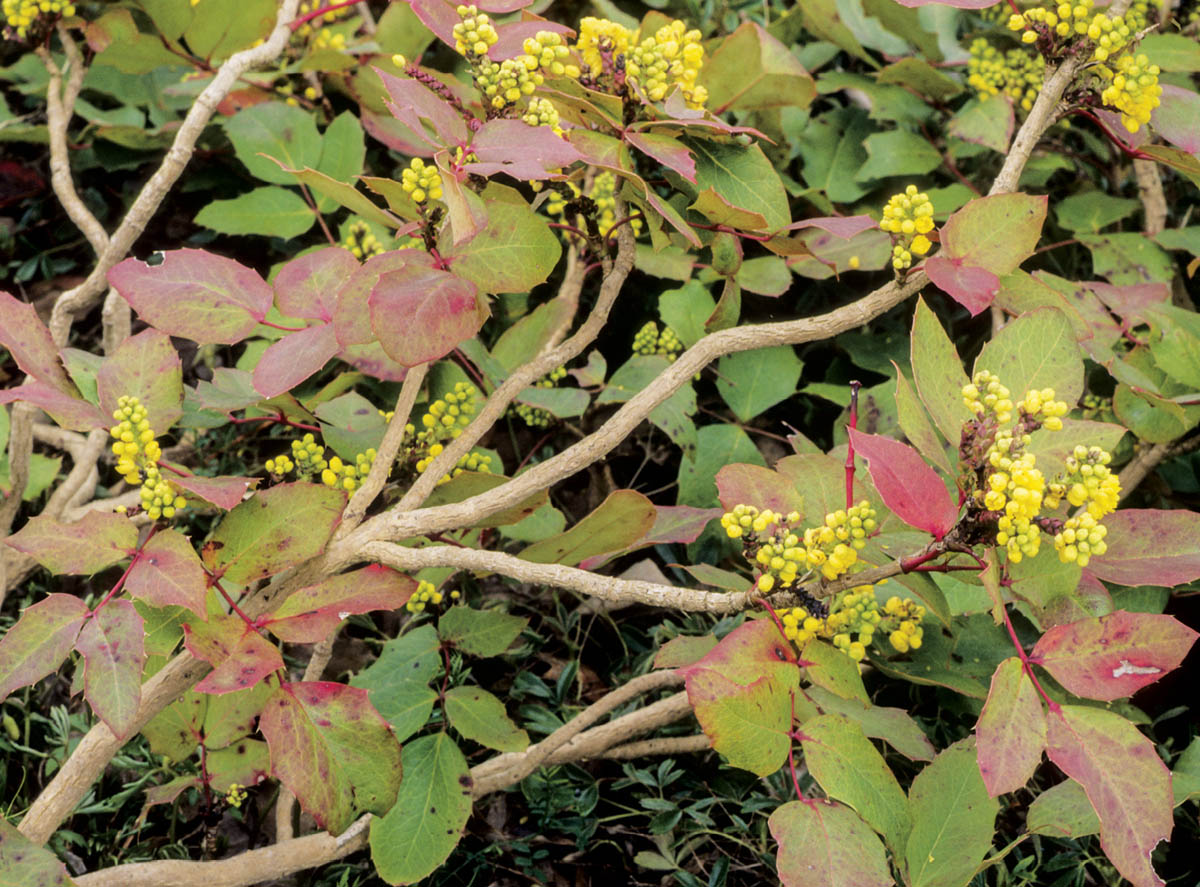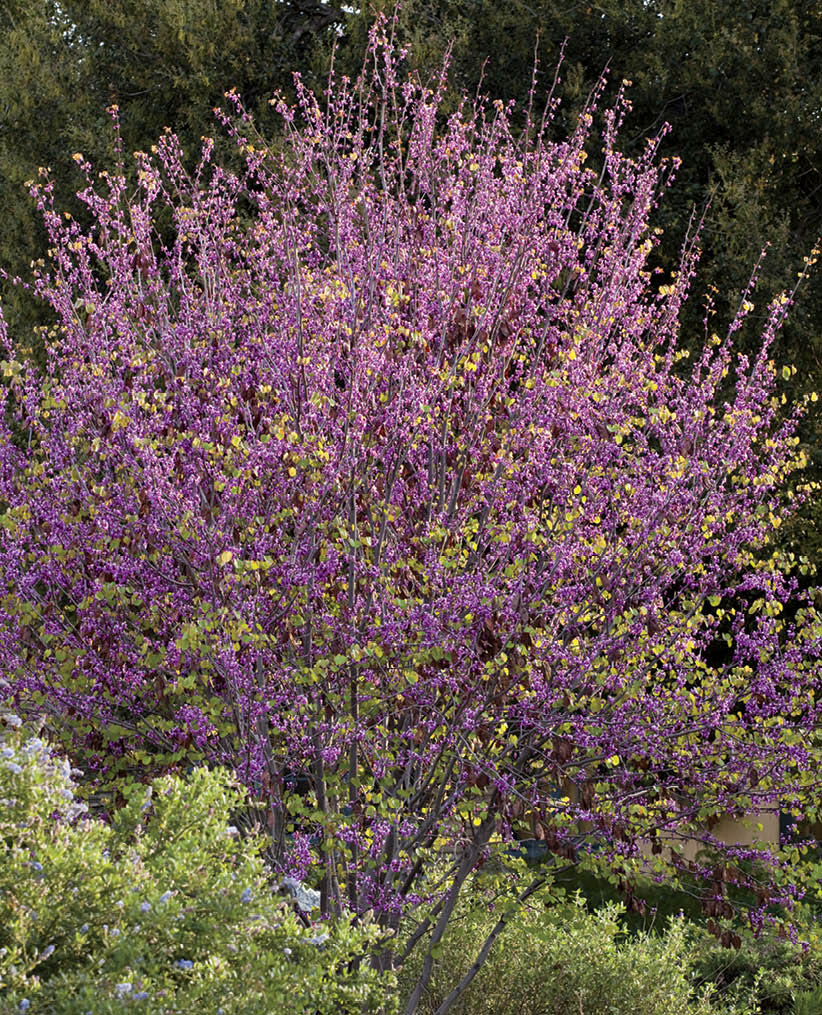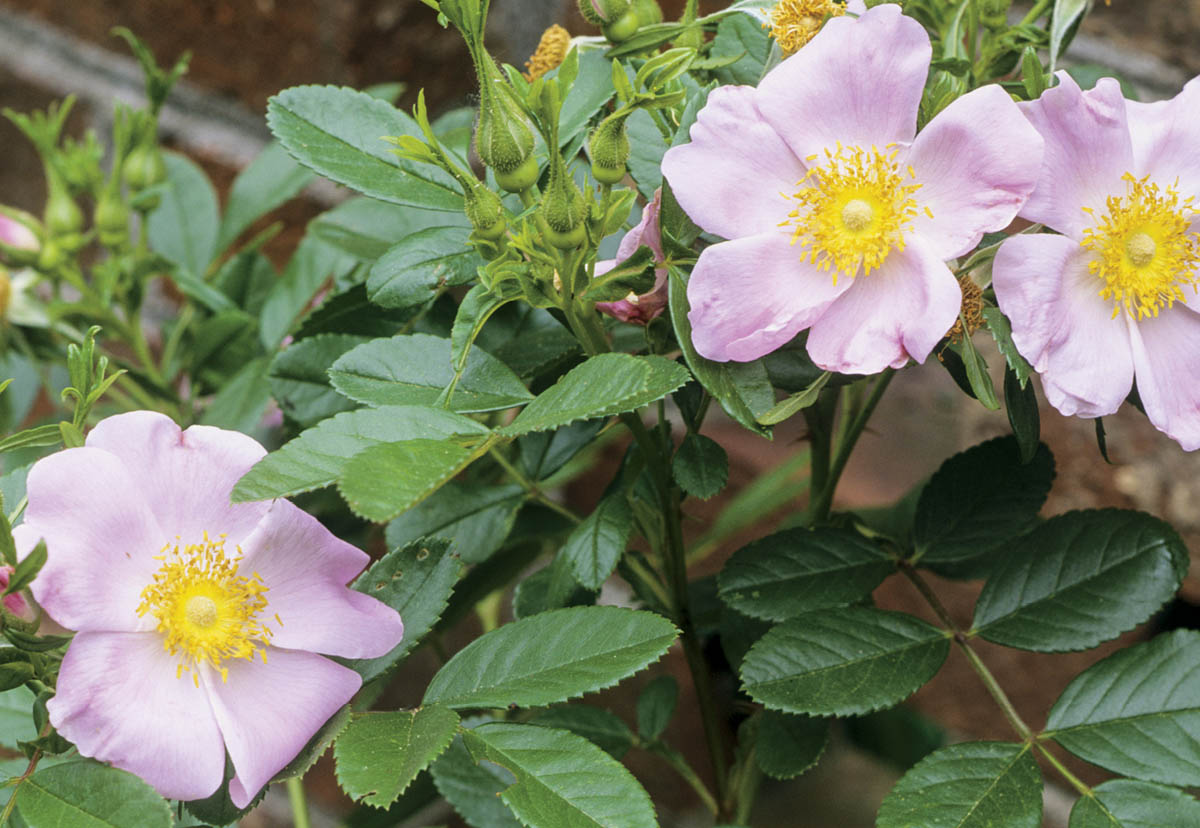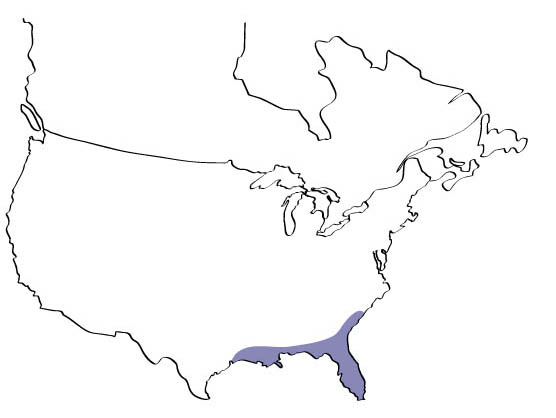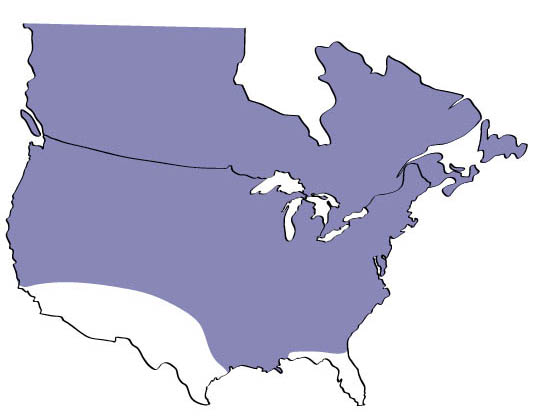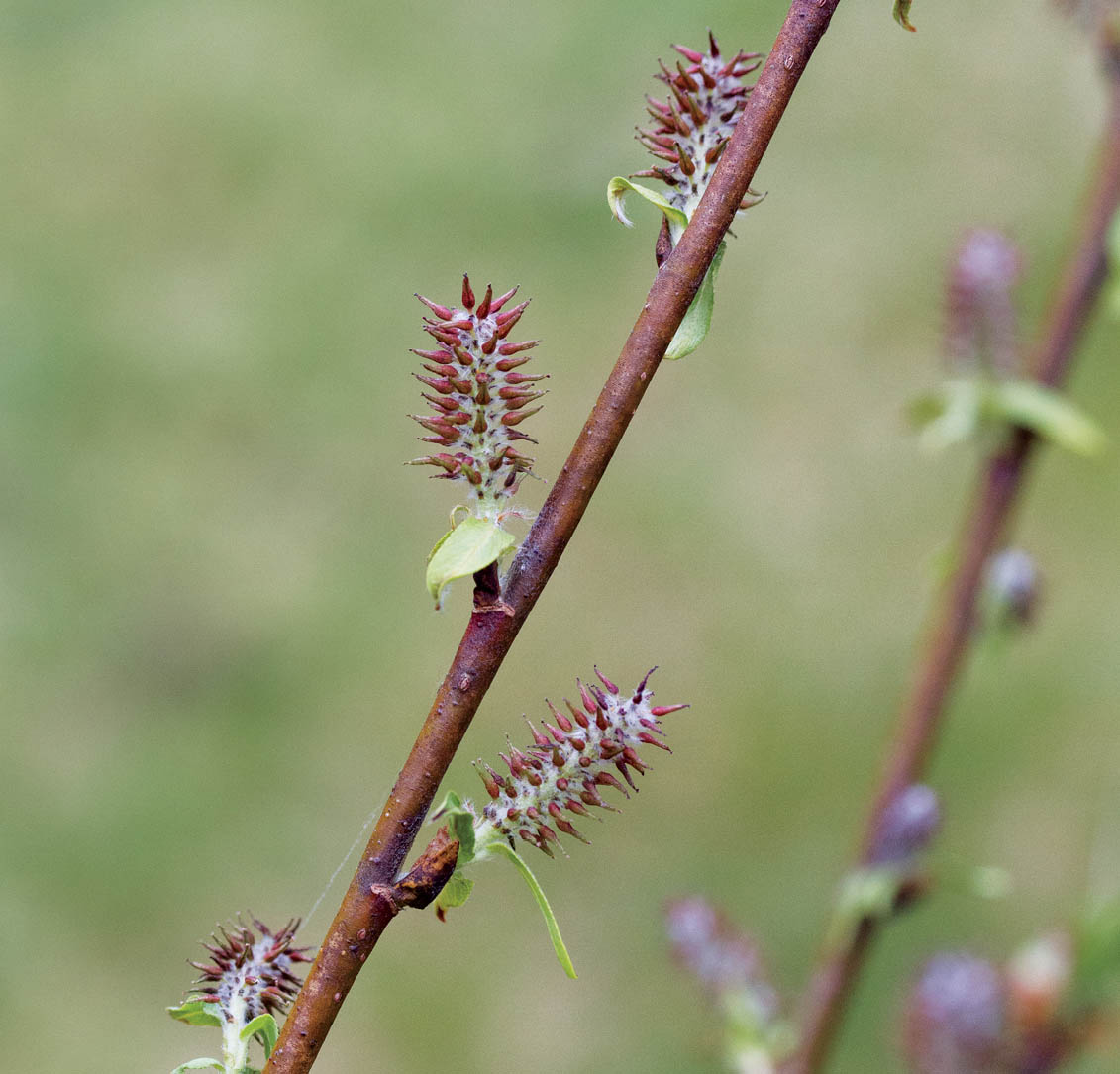60.
Ocean Spray
(Holodiscus discolor)
This very adaptable Western plant is equally at home on dry, rocky coastal cliffs, in cool forest understories, and on mountain slopes. Its thick foliage provides cover for numerous birds, small mammals, and even tree frogs. Equally valuable, ocean spray’s white masses of cascading flowers appear in midsummer, when most other shrubs and wildflowers have finished for the year. It attracts huge numbers of beneficial insects and is a staple of Xerces Society’s pollinator hedgerows in the Pacific Northwest.
Recommended varieties
Although a cultivated variety of ocean spray has apparently been developed in Europe, the Xerces Society uses and recommends the standard species for habitat restoration.
Notable Flower Visitors
Ocean spray hums with activity when in full bloom, drawing all manner of wasps, syrphid flies, and wild bees, large and small. Caterpillar host plant for Lorquin’s admiral (Limenitis lorquini), pale tiger swallowtail (Papilio eurymedon), and spring azure (Celastrina ladon) butterflies.
Uses
- Hedgerow
- Reforestation/shade garden
- Pollinator nesting material or caterpillar host plant
- Ornamental
Exposure: Sun to shade
Soil moisture: Average to dry
Bloom time: Summer
Flower color: White
Maximum height: 20 feet (6 m)
61.
Oregon Grape
(Mahonia aquifolium)
A hollylike evergreen shrub, Oregon grape has bright yellow bell-shaped blossoms in spring that give way to clusters of edible blue fruit later in the year. All of these handsome features, along with its adaptability to many sites and conditions, have made Oregon grape a popular landscaping shrub. Also called holly-leaved barberry, this species exists in two widely separate ranges: an eastern population in the Great Lakes region, and a western population in the Pacific Northwest.
Recommended Species or Varieties
Numerous cultivated varieties of Oregon grape are now available, including dwarf varieties popular for ornamental landscapes. At Xerces, we prefer the standard wild type for our habitat restoration projects.
Notable Flower Visitors
Attracts bumble bees (Bombus spp.) most of all, although mason bees (Osmia spp.) and hummingbirds — especially Anna’s hummingbird (Calypte anna) — are also common flower visitors.
Uses
- Hedgerow
- Reforestation/shade garden
- Ornamental
- Edible/herbal/medicinal
Exposure: Shade to part shade
Soil moisture: Wet to dry
Bloom time: Spring
Flower color: Yellow
Maximum height: 12 feet (3.6 m)
62.
Rabbitbrush
(Chrysothamnus spp.)
Blooming late in the year, even after unexpected frosts have killed other flowering plants, makes rabbitbrush an important nectar source in desert regions where some butterflies may remain active throughout winter. Usually found growing with sagebrush, these are tough, drought-tolerant plants common in arid regions of western North America. As well as being useful rangeland plants, their abundant blooms add a cheerful late-season splash of yellow color to xeriscape gardens. The dark-colored, foul-smelling honey produced from these plants is not popular for human consumption, but it can be an important source of overwintering food for honey bees in western states.
Recommended Species or Varieties
Yellow rabbitbrush (Chrysothamnus viscidiflorus), Greene’s rabbitbrush (C. greenei).
Notable Flower Visitors
Host plant for caterpillars of sagebrush checker-spot butterfly (Chlosyne acastus).
Uses
- Wildflower meadow/prairie restoration
- Rangeland/pasture
- Pollinator nesting material or caterpillar host plant
- Ornamental
Exposure: Sun
Soil moisture: Dry
Bloom time: Fall
Flower color: Yellow
Maximum height: 5 feet (1.5 m)
63.
Redbud
(Cercis spp.)
Brilliant magenta flowers open along the bare stems of redbud in early spring before the leaves emerge, a striking effect that rivals any highly bred ornamental and has endeared this small native tree to many home gardeners. The very early bloom of this plant makes it an important source of spring pollen for many bees. Redbud grows best in rich, moist soils, sheltered locations, and moderate temperatures. It does not thrive in extremely cold climates or high elevations.
Recommended Species or Varieties
In the West, California redbud (Cercis orbiculata) adapts to most locations and will even survive in desert areas if watered during the first few years after planting. In the East and Midwest, the Eastern redbud (C. canadensis) is readily available from both native and ornamental nurseries.
Notable Flower Visitors
An important source of early spring pollen for many bees, including some unusual species such as the southeastern blueberry bee (Habropoda laboriosa), which Xerces staff have observed visiting redbud flowers in northern Florida. Even in midsummer, after the flowers are gone, redbud continues to support leafcutter bees (Megachile spp.) as a preferred source of leaf pieces for nesting material. Although not tremendously attractive to butterflies, redbud is a caterpillar host plant for the Henry’s elfin butterfly (Callophrys henrici).
Uses
- Hedgerow
- Reforestation/shade garden
- Pollinator nesting material or caterpillar host plant
- Ornamental
Exposure: Sun to shade
Soil moisture: Average
Bloom time: Early spring
Flower color: Magenta
Maximum height: 30 feet (9 m)
64.
Rhododendron
(Rhododendron spp.)
More than 1,000 species of these magnificent, bold-flowering, glossy-leaved plants are found across the world. Some of the greatest species diversity occurs in Asia and the Appalachian Mountains (although other locations have their native share of these showy flowering shrubs). For years, taxonomists have grappled with the categorization of these plants, frequently revising and regrouping both azaleas and rhododendrons. Although exceptions exist, most of these species are evergreen, grow in moderate temperate regions, and prefer moist, acidic soils.
Recommended Species or Varieties
In the East, smooth azalea (Rhododendron arborescens), piedmont rhododendron (R. minus), and early azalea (R. prinophyllum) are all readily available from nurseries. In the West, look for native Pacific rhododendron (R. macrophyllum) and the Cascade azalea (R. albiflorum). Numerous ornamental varieties are also available, including selections of native species such as great laurel (R. maximum) and swamp azalea (R. viscosum), as well as hybrids.
Notable Flower Visitors
Attracts bumble bees, which eagerly collect nectar with no obvious ill effects. Honey bees, however, have occasionally been documented to die from rhododendron nectar, due to the presence of the chemical andromedotoxin. This chemical, once further concentrated in honey, can also be lethal to humans. This phenomenon has been described since early times, such as a famous mass poisoning of the Persian army in 401 bce after soldiers supposedly consumed rhododendron honey. Rhododendron species vary significantly in their relative toxicity. Andrena cornelli is a specialist bee of Rhododendron. Host plant for caterpillars of several large and ornate butterflies, including the green comma (Polygonia faunus), gray comma (P. progne), and hoary comma (P. gracilis).
Uses
- Hedgerow
- Reforestation/shade garden
- Pollinator nesting material or caterpillar host plant
- Ornamental
Exposure: Sun to shade
Soil moisture: Average to moist
Bloom time: Spring
Flower color: Many hues
Maximum height: 20 feet (6 m)
65.
Rose
(Rosa spp.)
Open-flowered native roses are dependable bee plants: in addition to offering attractive flowers and edible rose hips, they are generally easy to grow and tough. Most modern hybrids, on the other hand, offer little or nothing to pollinators — except those with flat single-petaled flowers that resemble wild roses. Most roses need average to dry soil, but a few such as swamp rose (Rosa palustris) tolerate wet roots. Native roses work well as hedgerow and hedgerow understory plants (depending on their mature size). They incorporate equally well into shelterbelts, riparian buffer areas, and shrubby pastures. Most roses produce little nectar, so pollen-collecting bees are the primary visitors.
Recommended Species or Varieties
In the West, Woods’ rose (Rosa woodsii) and Nootka rose (R. nutkana) are common, easy-to-grow species. In the Central Plains, prairie rose (R. arkansana) is well adapted to most sites. In the Midwest and East, Virginia rose (R. virginiana), swamp rose (R. palustris), and Carolina rose (R. carolina) are widely distributed and readily available options.
Notable Flower Visitors
Pollen-collecting bees are the primary visitors, including the specialist bee Eucera rosae. Leafcutter bees (Megachile spp.) harvest bits of rose leaves to use in nest construction; this does no significant damage to plants. Host plant for the bizarre-looking caterpillars of the stinging rose caterpillar moth (Parasa indetermina). As the name suggests, these brightly colored caterpillars (which resemble sea anemones!) cause stinging and skin burns when touched. As adults, these large moths resemble curled green leaves.
Uses
- Hedgerow
- Wildflower meadow/prairie restoration
- Farm buffer/filter strip
- Pollinator nesting material or caterpillar host plant
- Ornamental
- Edible/herbal/medicinal
Exposure: Sun to part shade
Soil moisture: Wet to dry
Bloom time: Late spring to summer
Flower color: White, yellow, red, pink
Maximum height: 12 feet (3.6 m)
66.
Saw Palmetto
(Serenoa repens)
A low-growing scrub palm, saw palmetto is ubiquitous in thickets in sandy soils across Florida and Gulf Coast woodlands. Although the plant is not typically available from commercial nurseries, it is worth recognizing its value and prioritizing its conservation as part of the woodland plant community. Despite their small size, saw palmetto plants are extremely long lived (possibly hundreds of years) and able to resprout following forest fires, seeming to flower more abundantly on new growth. Among beekeepers, saw palmetto is famous for its abundant spring nectar flow. It produces thick, delicious, lemon-yellow honey that some argue is the best produced in Florida. Beekeepers regularly report 50- to 80-pound honey surpluses per colony from this plant.
Recommended Species or Varieties
Various other palmettos are found in subtropical and tropical regions, many of them excellent pollinator plants, but the common wild saw palmetto is among the best.
Notable Flower Visitors
Attracts honey bees. Host plant for caterpillars of palmetto skipper butterfly (Euphyes arpa).
Uses
- Reforestation/shade garden
- Wetland restoration
- Pollinator nesting material or caterpillar host plant
- Edible/herbal/medicinal
Exposure: Part shade
Soil moisture: Well-drained or seasonally waterlogged soils
Bloom time: Spring to summer
Flower color: White
Maximum height: 10 feet (3 m)
67.
Serviceberry
(Amelanchier spp.)
Also known as shadbush or shadblow, several serviceberry species are planted as ornamentals and as fruit trees. Many species are fire dependent in the wild, growing most abundantly in forest areas recently cleared by burning. All are excellent pollinator plants, often among the earliest blooming plants wherever they grow — with their clouds of delicate white flowers conspicuously standing out in forests of otherwise bare spring trees.
Recommended species
In the West, Saskatoon serviceberry (Amelanchier alnifolia) is common and widely available. In the East, common serviceberry (A. arborea) and Canadian serviceberry (A. canadensis) are both widely available from native plant vendors and regular nurseries.
Notable Flower Visitors
The spring blossoms of serviceberry attract various native bee species and honey bees. Host plant for caterpillars of various large, showy butterflies including Weidemeyer’s admiral (Limenitis weidemeyerii), western swallowtail (Papilio zelicaon), pale swallowtail (P. eurymedon), and two-tailed swallowtail (P. multicaudata).
Uses
- Hedgerow
- Reforestation/shade garden
- Pollinator nesting material or caterpillar host plant
- Ornamental
Exposure: Sun to part shade
Soil moisture: Average
Bloom time: Early spring
Flower color: White
Maximum height: 40 feet (12 m)
68.
Sourwood
(Oxydendrum arboreum)
These handsome pyramid-shaped trees thrive in moist, peaty, acidic soil. In fall they produce striking scarlet-red foliage that rivals the color of any maple. This beautiful fall show endears sourwood to home gardeners. In the wild it grows in mixed-oak forests and typically remains small under the competition of a larger oak tree canopy; in open areas without shade or competition it can grow much larger. Songs and other folklore extol its value as a honey plant, a reputation that is well earned. Sourwood is a prolific nectar plant, bearing long, slender clusters of white bell-shaped flowers. Its honey is famous among beekeepers and foodies alike, with a light, lavender hue, a thick texture, and a slight hint of maple flavor. It is very slow to granulate. Surpluses of more than 70 pounds per colony have been reported.
Recommended species
Several ornamental cultivars are available, including ‘Chameleon’ and ‘Mt. Charm’. These have been selected mostly for fall color and may not represent the best selections for pollinators.
Notable flower visitors
Attracts honey bees, bumble bees, carpenter bees, leafcutter bees, mason bees, and resin bees.
Uses
- Reforestation/shade garden
- Ornamental
Exposure: Sun to shade
Soil moisture: Average
Bloom time: Early summer
Flower color: White
Maximum height: 80 feet (24 m)
69.
Steeplebush, Meadowsweet
(Spiraea spp.)
Spirea species tend to prefer fertile, slightly wet soils such as ditches, stream banks, and the edges of grassed waterways on farms. Initially slow growing, once established the plants can hold their own against many invasive species such as reed canary grass and Himalayan blackberry. Nearly all spireas integrate wonderfully into hedgerows and complement diverse shrub plantings with their large spearhead-shaped flower clusters and very long-lasting blooms.
Recommended species
Steeplebush (Spiraea tomentosa) and white meadowsweet (S. alba) are two widely distributed eastern species with long bloom periods. In the west, Douglas spirea (S. douglasii) is widely available from nurseries and establishes easily anywhere with sufficient moisture.
Notable Flower Visitors
Attracts a wide variety of beneficial insects, especially small flies and wasps, also butterflies and bumble bees.
Uses
- Hedgerow
- Reforestation/shade garden
- Wetland restoration
- Farm buffer/filter strip
- Ornamental
Exposure: Sun
Soil moisture: Average to wet
Bloom time: Late spring to early fall
Flower color: White, pink, purple
Maximum height: 4 feet (1.2 m)
70.
Toyon
(Heteromeles arbutifolia)
Once a major component of California’s chaparral ecosystem, toyon has dark green leathery evergreen leaves rising from multiple stems and long-lasting red berries that are consumed by birds (and frequently used in holiday wreaths). It is ideal as a specimen shrub or as a screen when planted as a hedge. Its ornamental qualities and ability to survive drought, below-freezing temperatures, and generally tough sites have made it increasingly common as a landscape plant outside California. The average sugar concentration of toyon nectar has been reported as 44%. It produces a thick amber honey that crystallizes easily. The hollylike leaves and berries of toyon are supposedly the namesake for the city of Hollywood — and not holly itself.
Recommended Species or Varieties
Toyon can vary in mature size; somewhat distinct local populations occur as small shrubs while others grow into a small tree. When buying at a nursery that sells native plants, ask what their experience is with the mature size and shape of the toyon they sell.
Notable Flower Visitors
A tough, all-purpose bee plant, supporting native bees and honey bees alike. Caterpillar host plant for the echo azure butterfly (Celastrina echo).
Uses
- Hedgerow
- Reclaimed industrial land/tough sites
- Rangeland/pasture
- Pollinator nesting material or caterpillar host plant
- Ornamental
Exposure: Sun
Soil moisture: Dry
Bloom time: Spring to early summer
Flower color: White
Maximum height: 30 feet (9 m)
71.
Tulip Tree
(Liriodendron tulipifera)
Its big showy flowers make tulip tree an attractive addition to a residential landscape, and many cultivated varieties are now available from nurseries. The tall trees produce large quantities of nectar — in some cases they literally drip nectar — that attracts honey bees and wild pollinators alike.
Recommended varieties
Choose plants with bright yellow flowers, because those with greener tints may be less attractive to pollinators.
Notable Flower Visitors
Attracts honey bees and native bees. Caterpillar host plant for the eastern tiger swallowtail (Papilio glaucus) and the spicebush swallowtail (P. troilus) butterflies.
Uses
- Reforestation/shade garden
- Pollinator nesting material or caterpillar host plant
- Ornamental
Exposure: Sun
Soil moisture: Average to wet
Bloom time: Mid-spring
Flower color: Yellow
Maximum height: 120+ feet (36.5 m)
72.
Tupelo
(Nyssa spp.)
Famous among beekeepers, water tupelo produces a very light, mild, noncrystallizing honey that commands a high market price. The more swamp-adapted species are the best honey producers, supporting a million-dollar specialty honey industry in Florida. Florida beekeepers even place hives on floating platforms along river swamps to take advantage of the tupelo bloom. Historically, thousands of barrels of honey were produced in the Apalachicola area annually. Tupelo trees are most at home in swamps and seasonally wet lowland soils. While the flowers are not particularly showy, scarlet autumn foliage has made this increasingly popular as an ornamental landscape tree.
Recommended species
Water tupelo (Nyssa aquatica) and white tupelo (N. ogeche) are the most important and prolific honey producers. Black gum (N. sylvatica) is more widely distributed, and more adaptable to drier upland soils.
Notable Flower Visitors
Attracts honey bees.
Uses
- Reforestation/shade garden
- Ornamental
Exposure: Sun
Soil moisture: Average to wet
Bloom time: Mid-spring
Flower color: Green
Maximum height: 50 feet (15 m)
73.
Wild Lilac
(Ceanothus spp.)
Their wonderful ornamental qualities (some produce electric-blue flowers), fragrant blooms, and leathery leaves make wild lilacs excellent plants for the home landscape and farm hedgerow alike. An enormous diversity of bees and other pollinators visit wild lilacs, which in the West are commonly referred to by their genus name, Ceanothus. Most species are slow growing, difficult to establish from seed, and readily eaten by deer.
Recommended species
In the West, many native species are readily available from nurseries, especially in California. The Xerces Society often plants buckbrush (Ceanothus cuneatus) in pollinator hedgerows. In the Midwest and New England, the white-flowered New Jersey tea (C. americanus) is a common and adaptable species.
Notable Flower Visitors
Attracts bees, syrphid and tachinid flies, mud daubers, spider wasps, sand wasps, and many butterflies. Pseudopanurgus pauper is a specialist bee. Host plant for caterpillars of California hairstreak (Satyrium californica), hedgerow hairstreak (S. saepium), California tortoiseshell (Nymphalis californica), spring azure (Celastrina ladon), summer azure (C. neglecta), echo blue (C. echo), mottled duskywing (Erynnis martialis), pacuvius duskywing (E. pacuvius), and western green hairstreak (Callophrys affinis) butterflies as well as white-streaked saturnia (Saturnia albofasciata) and ceanothus silk (Hyalophora euryalus) moths.
Uses
- Hedgerow
- Rangeland/pasture
- Pollinator nesting material or caterpillar host plant
- Ornamental
Exposure: Sun to part shade
Soil moisture: Average
Bloom time: Spring to summer
Flower color: White, blue, pink
Maximum height: 12 feet (3.6 m)
74.
Willow
(Salix spp.)
An important spring food source for bees, willows offer the first pollen available in many areas. To take advantage of this, beekeepers sometimes plant willow thickets around apiaries to provide both a windbreak and an early-season source of nutrition. Willows have separate male and female plants, so plant males (the only ones that produce pollen) if bee forage is the primary goal. Both male and female willows can produce nectar, with the sugar concentration in nectar reported as high as 60% in some species. Willows are easily propagated by cuttings that are simply planted in the ground and regularly watered. They also readily resprout from coppice cutting (cutting them back to stumps), creating dense, multistem thickets.
Recommended species
Pussy willows are among the better species, especially the native pussy willow (Salix discolor) and the nonnative S. caprea and S. cinerea. Horticultural hybrids, including most weeping willows, are of little value to pollinators.
Notable Flower Visitors
Attracts many specialist mining bee species, including Andrena andrenoides, A. bisalicis, A. erythrogaster, A. fenningeri, A. illinoiensis, A. mariae, A. salictaria, and A. sigmundi. Host plant for caterpillars of many butterflies, including eastern tiger swallowtail (Papilio glaucus), western tiger swallowtail (P. rutulus), mourning cloak (Nymphalis antiopa), Compton’s tortoiseshell (N. vaualbum), Lorquin’s admiral (Limenitis lorquini), Weidemeyer’s admiral (L.s weidemeyerii), white admiral (L. arthemis), viceroy (L. archippus), Acadian hairstreak (Satyrium arcadica), California hairstreak (S. californica), Sylvan hairstreak (S. sylvinus), and dreamy duskywing (Erynnis icelus).
Also host plant for caterpillars of many large and dramatically patterned moths including black-waved flannel (Lagoa crispata), Cynthia (Samia cynthia), imperial (Eacles imperialis), Io (Automeris io), polyphemus (Antheraea polyphemus), promethean (Callosamia promethea), cecropia (Hyalophora cecropia), elm sphinx (Ceratomia amyntor), twin-spotted sphinx (Smerinthus jamaicensis), blinded sphinx (Paonias excaecata), and modest sphinx (Pachysphinx modesta).
Uses
- Hedgerow
- Wetland restoration
- Farm buffer/filter strip
- Pollinator nesting material or caterpillar host plant
- Ornamental
Exposure: Sun to part shade
Soil moisture: Wet to average
Bloom time: Early spring
Flower color: White, yellow
Maximum height: 140 feet (43 m) (S. nigra)
75.
Yerba Santa
(Eriodictyon spp.)
Bees, butterflies, and hummingbirds all flock to yerba santa blossoms, and honey bees produce a spicy, amber-colored honey from its nectar. Despite its magnificent pollinator value, these oily plants are unlikely to win praise for their unpleasant smell and sticky, resin-covered leaves and stems, which are flammable and often covered in fungus. Like other natives of the California chaparral, yerba santa thrives in recently burned areas and quickly regrows in shrubby clonal colonies, resprouting from extensive rhizomes.
Recommended species
Most species are limited to California and may be available only from specialty native plant nurseries. Look for narrowleaf yerba santa (Eriodictyon angustifolium) and the showier California mountain balm (E. californicum).
Notable Flower Visitors
Attracts honey bees, countless species of wild bees, hummingbirds, and butterflies. Host plant for caterpillars of the large and showy pale swallowtail butterfly (Papilio eurymedon).
Uses
- Hedgerow
- Rangeland/pasture
- Pollinator nesting material or caterpillar host plant
- Medicinal
Exposure: Sun
Soil moisture: Dry
Bloom time: Spring
Flower color: Purple, white
Maximum height: 8 feet (2.4 m)








